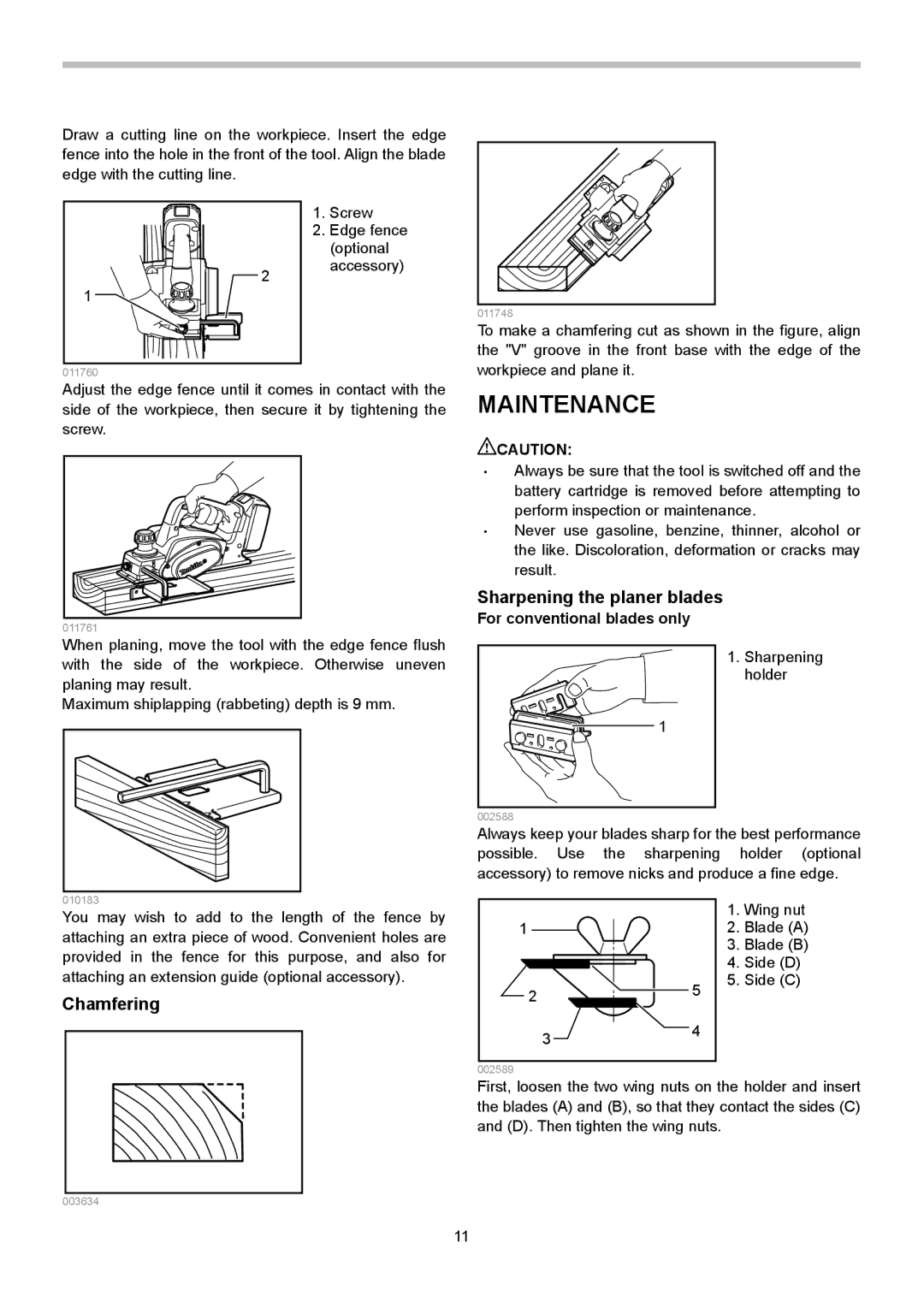
Draw a cutting line on the workpiece. Insert the edge fence into the hole in the front of the tool. Align the blade edge with the cutting line.
1
011760
2
1.Screw
2.Edge fence (optional accessory)
011748
To make a chamfering cut as shown in the figure, align the "V" groove in the front base with the edge of the workpiece and plane it.
Adjust the edge fence until it comes in contact with the side of the workpiece, then secure it by tightening the screw.
011761 |
When planing, move the tool with the edge fence flush with the side of the workpiece. Otherwise uneven planing may result.
Maximum shiplapping (rabbeting) depth is 9 mm.
010183 |
You may wish to add to the length of the fence by attaching an extra piece of wood. Convenient holes are provided in the fence for this purpose, and also for attaching an extension guide (optional accessory).
Chamfering
003634
MAINTENANCE
![]() CAUTION:
CAUTION:
•Always be sure that the tool is switched off and the battery cartridge is removed before attempting to perform inspection or maintenance.
•Never use gasoline, benzine, thinner, alcohol or the like. Discoloration, deformation or cracks may result.
Sharpening the planer blades
For conventional blades only
1. Sharpening holder
1
002588
Always keep your blades sharp for the best performance possible. Use the sharpening holder (optional accessory) to remove nicks and produce a fine edge.
|
|
|
| 1. Wing nut | |
1 |
|
|
| 2. | Blade (A) |
|
|
|
| 3. | Blade (B) |
|
|
|
| 4. | Side (D) |
| 2 |
| 5 | 5. | Side (C) |
|
|
|
| ||
|
|
|
|
| |
|
| 3 | 4 |
|
|
|
|
|
|
| |
002589 |
|
|
|
|
|
First, loosen the two wing nuts on the holder and insert the blades (A) and (B), so that they contact the sides (C) and (D). Then tighten the wing nuts.
11
